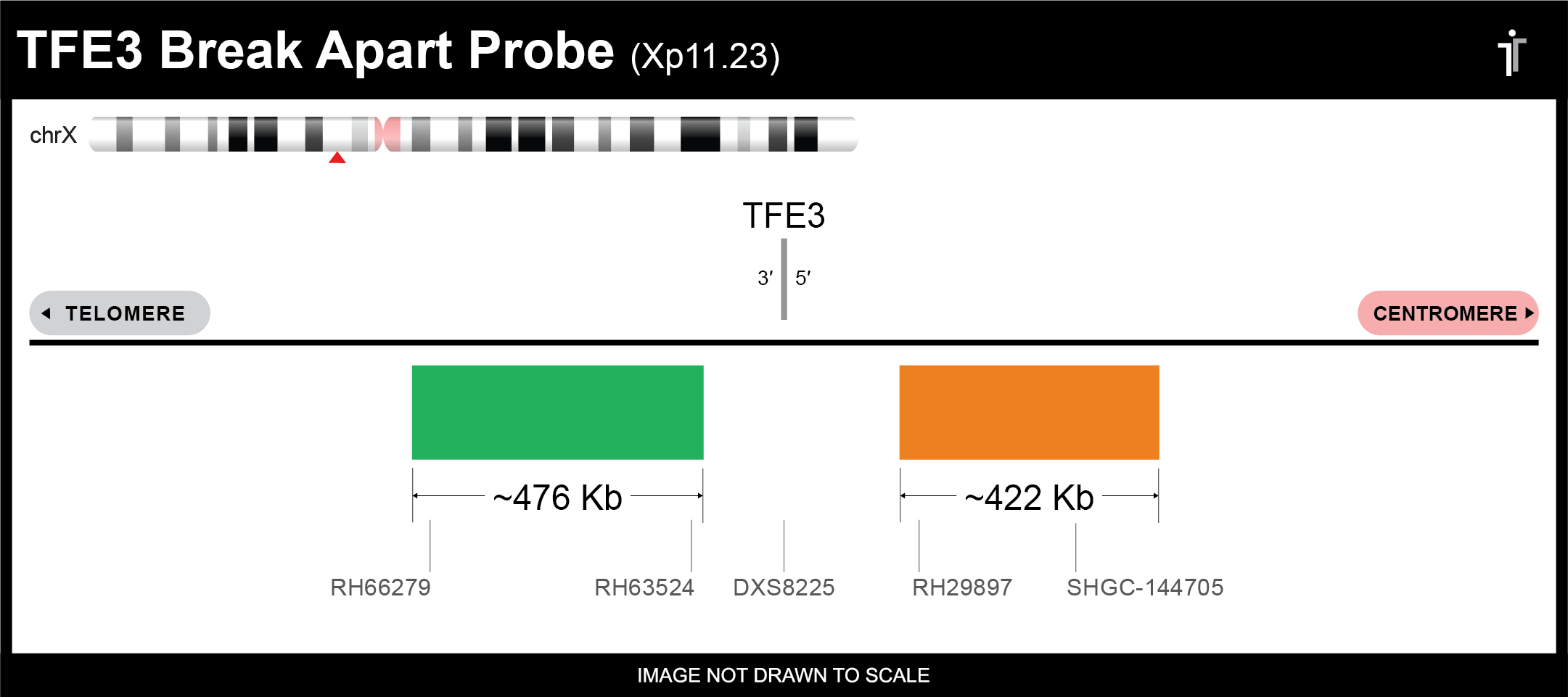TFE3 Break Apart FISH Probe
Our TFE3 break apart probe is designed to detect TFE3 translocations. The probe comes labeled in green and orange, but can be customized to meet your needs.

** This product is for in vitro and research use only. This product is not intended for diagnostic use.

| SKU | Test Kits | Buffer | Dye Color | Order Now |
|---|---|---|---|---|
| TFE3BA-20-GROR (Standard Design) | 20 (40 μL) | 200 μL |


|
|
| TFE3BA-20-GRGO | 20 (40 μL) | 200 μL |


|
|
| TFE3BA-20-GRRE | 20 (40 μL) | 200 μL |


|
Gene Summary
This gene encodes a basic helix-loop-helix domain-containing transcription factor that binds MUE3-type E-box sequences in the promoter of genes. The encoded protein promotes the expression of genes downstream of transforming growth factor beta (TGF-beta) signaling. This gene may be involved in chromosomal translocations in renal cell carcinomas and other cancers, resulting in the production of fusion proteins. Translocation partners include PRCC (papillary renal cell carcinoma), NONO (non-POU domain containing, octamer-binding), and ASPSCR1 (alveolar soft part sarcoma chromosome region, candidate 1), among other genes. Alternative splicing results in multiple transcript variants. [provided by RefSeq, Aug 2013]
Gene Details
Gene Symbol: TFE3
Gene Name: Transcription Factor Binding To IGHM Enhancer 3
Chromosome: CHRX: 48886241-48900990
Locus: Xp11.23
FISH Probe Protocols
| Protocol, Procedure, or Form Name | Last Modified | Download |
|---|